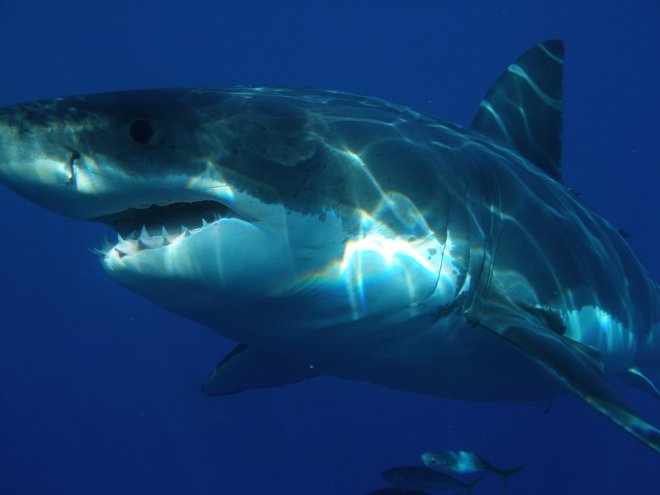
A strange phenomenon has been observed in South Africa where corpses of great white sharks have been periodically appearing washed up on beaches. The sharks have an identical wound: a hole between their pectoral fins and liver.
Turns out that a huge battle for survival is going on underwater as the most dangerous predator, the great white shark, has become prey to huge killer whales, which have developed a taste for their liver.
The orca killer whales near the South African coast have preyed on sharks before, but the frequency has increased since May. Till date, about five large carcasses of killer whales have washed up on the beach, with speculations that there are more dead bodies on the ocean floor.
The method of hunting

Female great white sharks, which are larger in size, grow till 6.1 metres and weigh about 2,000 kg at maturity, whereas killer whales reach 9.6 metres and weigh 9,000 kg.
As you can imagine, the fight is tough between the two apex predators but orcas have more chance of winning. They execute the hunt with surgeon-like precision, aiming directly at the shark's oil-rich liver.
A major method of attack is tonic immobility, where orcas stun sharks by slapping them with its huge tail, knocking them over, rendering them immobile and pushing them through the water until they stop breathing. After that, the orca tears a hole in the shark and pulls out its liver for consumption.
The Dyer Island Conservation Trust, which performs the autopsies of the shark corpses have expressed surprise at the precise aim of the whales. "I've seen some incredible things working with the Dyer Island Conservation Trust, but one thing I never ever expected to see was predation pressure from killer whales. We had never even seen an orca here prior to 2011," said Alison Towner, white shark marine biologist at the institution.
The shocking discoveries
From early May, scientists from Marine Dynamics, a shark cage diving company, have been observing two killer whales in the southwestern coast of South Africa. Soon enough, bodies of great white sharks began emerging. The post-mortem of the corpses indicates clearly towards an orca predation.
It has been speculated that these two particular orca whales have developed special skills to hunt sharks, which are themselves fierce predators. "Now that they have learned how to kill white sharks, that's probably not going to stop anytime soon," says Towner, as reported by Fox News.
What is even more fearsome is that orcas hunt as a group and are very intelligent creatures, capable of using their prey's weaknesses. Due to their threat, great white sharks have started disappearing from that area.
Great White Sharks have been classified as a vulnerable species by IUCN. It has been reported that about 4,000 to 5,000 of them are surviving presently. This has left scientists worried about their increased killing.
"Sharks face many threats in Southern Africa. Fisheries, bather protection nets, poaching, pollutants, coastal development, global warming impacts. Now they have predation pressure from another predator. The odds are just not stacked up in their favour," said Towner.
If you are still curious about how great white sharks are defeated, watch the video below.









